Details Introduction
What problems can energy blockchain solve?
Release time:
2020-07-13
July 6,National GridCompanyBlockchainThe technical laboratory was established. Ding Maosheng, a member of the Academic Committee of the State Grid Blockchain Technology Laboratory, said that the blockchain will deeply empower the development of information flow, energy flow and business flow with a high degree of integration.Energy InternetConstruction, the establishment of the laboratory will efficiently support the implementation of the National Grid Corporation's digital new infrastructure strategy.
In 2020, the "new infrastructure" presses the fast-forward button and the pace of digital transformation in the energy industry accelerates. The State Grid Corporation is committed to the construction of new digital infrastructure and recently released ten tasks. In the new digital infrastructure projects, 5G base stations, big data centers and other projects with high operating energy consumption are regarded as "large energy consumers", which need to be well prepared in advance for their energy supply reserves.
How to achieve the "big energy consumption" of the hat? In addition to improving the energy structure, improve energy efficiency, relying on shared energy storage for the "big energy consumption" to provide new energy green electricity is also a solution.
The purpose of shared energy storage lies in the flexible peaking and flexible allocation of resources, and the key lies in the mutual trust of information among the participants. The vision of sharing is very beautiful. However, how to achieve equal sharing of information, high participation and mutual trust of subjects, and realization of sharing and realization at a lower cost are common problems encountered in the sharing economy.
At present, the main dilemma of shared energy storage is that information is "difficult to share".There are many participants in the energy storage industry, from the power generation side, the power grid side to the user side, the participants cover power grid enterprises, power equipment enterprises, energy storage enterprises, electricity sales companies and other parties, there is an information gap between the subjects in the same industrial chain, sharing energy storage flexibility is not enough. It is the consensus of the digital age that data can be transformed into assets, and data silos caused by poor information constrain the realization of current data.
The poor flow of information has caused two main problems of shared storage.
First, the operation and maintenance cost of energy storage power station is too high, and the participation of market subjects is insufficient.
Promoting new energy consumption is the main battlefield for energy storage, but the cost of allocating energy storage to less flexible renewable energy may be higher than abandoning electricity. In the case of the new market rules are not yet perfect, the high cost will hit the enthusiasm of new energy owners to configure energy storage, the owners who have configured energy storage may choose to abandon the wind under the pressure of cost, thus losing the advantage of sharing energy storage flexible allocation of new energy.
In 2019, more than 20 energy storage power station fires occurred in South Korea, causing the industry to pay close attention to the operation and safety of energy storage power stations. Because the information is not updated in time, the energy storage power station consumes the battery excessively in the actual operation, which not only has the quality hidden danger, but also breaks the operation law of the investment income cycle.
Second, the rules for clearing and settling multi-party transactions are not clear, and market participants have doubts about the security and credibility of transactions.
At present, China's energy storage market is in its infancy, the market is dominated by equipment suppliers, lack of third-party integrators to integrate the industrial chain, so in the operation and maintenance of energy storage power stations, settlement needs to face multiple subjects, resulting in lack of supervision, operation and maintenance confusion, settlement delays.
Most of the equipment suppliers in China's energy storage market come from industries such as power batteries, photovoltaics and power equipment. Equipment suppliers in the energy storage market price war, price and equipment data information is not transparent, bad money drives out good money, may cause security risks and industry operation vicious circle.
"New infrastructure" speed up, the State Grid Corporation proposed the construction of Chinese characteristics of the international leading energy Internet enterprises strategic objectives, new energy development, smart energy systems and other major issues of power grid development are the focus. Decentralization, de-trust, collective maintenance and data transparency are the basic operational logic of the underlying technology of blockchain, and the characteristics of blockchain are consistent with the needs of decentralized layout of energy storage, rapid response and mutual recognition of contribution.
Blockchain entry to share energy storage is cracking the "sharing difficulty" dilemma of shared energy storage.
First, decentralization breaks down information barriers and multi-party participants realize information sharing.
The traditional shared energy storage model requires the layout of an information center hub, from which all parties involved can obtain data. However, the block chain under the de-center and distributed logic can directly skip the information hub to build the operation and maintenance link. Blockchain technology can establish a mutual trust mechanism at low cost, break the barrier of information between different subjects, promote the barrier-free flow of information between multiple parties, and achieve cross-subject collaboration. The combination of shared energy storage and blockchain technology breaks the boundaries of the power supply side, the grid side and the user side, while breaking the shackles of the ownership of different assets and cracking the problem of information barriers in the traditional shared energy storage model.
Second, the barrier-free flow of information will reduce operation and maintenance costs and increase the participation of market players.
The introduction of blockchain technology in the operation and maintenance management of energy storage power stations can enable multiple upstream and downstream participants to participate in the operation, maintenance and equipment management of energy storage power stations, forming a distributed and supervised data registration network of energy storage power stations. The higher the activity of the participants in the shared energy storage mode, the more information they can share and the higher the efficiency of the system operation.
Third, blockchain sharing energy storage will directly hit the pain point of clean energy consumption, and the State Grid has already had a leading case in Qinghai.
On May 9, Qinghai launched the "Green Power Three Rivers Source" 100-day series of activities, the State Grid Qinghai Electric Power relying on the "State Grid Chain" to create a new generation of shared energy storage model, opening up China's first block chain shared energy storage market.
The "State Grid Chain" was the first to be used in Qinghai, precisely because of the match between the advantages of the block chain in coordination ability and the demand for clean energy consumption and peak shaving. The block chain, the underlying technology, with its unique characteristics of de-centering, de-trust, collective maintenance, data transparency and credibility, just meets the urgent needs of energy storage peak shaving auxiliary service technical support. The decentralized layout of energy storage, emergency and rapid response, and accurate matching of charge and discharge electricity are all perfect application scenarios of block chain technology.
Today, the blockchain-based shared energy storage auxiliary service trading platform of State Grid Qinghai Electric Power can automatically organize new energy enterprises to carry out transactions and store new energy power to shared energy storage power stations. Blockchain technology automatically matches the optimal solution, allowing new energy enterprises to share energy storage resources, maximizing the consumption of new energy, and achieving a win-win situation through market-based income distribution.
The application of energy blockchain has been listed as one of the ten key construction tasks of the new digital infrastructure of the State Grid, and the establishment of the blockchain technology laboratory.
The openness, independence, security and decentralization of blockchain can make up for the disadvantages of multiple applications in shared energy storage, unclear investment subjects and unclear business models.
In the future, with the further integration of blockchain and shared energy storage, it will provide support in a wide range of clean energy consumption, efficient operation of virtual power plants, and photovoltaic poverty alleviation operation and maintenance dividends. Actively build a co-construction, sharing, co-governance of the energy blockchain industry ecosystem, and comprehensively promote the development of blockchain-enabled enterprises.
Previous article
Previous article
Related News
From March 15-16, Li Guiping, Chairman of Hengkai Electric Co., Ltd. (hereinafter referred to as Hengkai Electric), and Lin Jianfeng, General Manager of Hengkai Electric (Cambodia) Co., Ltd. (hereinafter referred to as Cambodia Company), conducted an in-depth investigation into the Cambodia Company's business in Cambodia. They comprehensively understood the operational status of the Cambodia Company, clarified the strategic direction for the company's future development, and helped the company achieve rapid development in the Cambodian market.
On March 13, 2025, Li Guiping, Chairman of Hengkai Electric Co., Ltd. (hereinafter referred to as Hengkai Electric), founder of Hengkai Chunqiu Electric (Thailand) Co., Ltd. (hereinafter referred to as Hengkai Chunqiu), and Shen Yinghui, General Manager of the New Energy Business Department of Hengkai Electric, along with Li Qinghe, founder and general manager of Hengkai Chunqiu, went to Thailand to conduct a field inspection of the ongoing project (Bang Lamung 115kV substation project). They gained an in-depth understanding of the project's progress, injecting strong impetus into the company's international business development. This inspection not only demonstrates the company's high regard for overseas projects but also further shows the company's firm determination in expanding the international market and promoting its global strategic layout.
On the afternoon of January 22, 2025, Mr. Wang Zujian, Chairman and President of the China International Friendship City Promotion Association, and his delegation visited our company for investigation and guidance. Mr. Li Guiping, Chairman of the Board of Directors of our company, warmly received them and presided over a meeting. Both sides held a very friendly and pleasant exchange, with relevant personnel from our company participating in the meeting.
On December 9, 2024, a group of four people including Li Guiping, Li Qinghe, and Liu Xiaoxin, founders of Hengkai Chunqiu Electric (Thailand) Co., Ltd. (hereinafter referred to as Hengkai Chunqiu), visited the Thailand representative office of the Asia-Pacific regional headquarters of China Hydropower Construction Group 15th Engineering Bureau Co., Ltd. (hereinafter referred to as China Hydropower 15th Bureau). Shen Changchun, project manager of China Hydropower 15th Bureau's Thailand substation project and Thailand country representative, warmly received them.
On the afternoon of October 31, 2024, Hengkai Electric Co., Ltd. (abbreviated as: Hengkai Electric) and Thai Chunqiu Engineering and Construction Co., Ltd. (abbreviated as: Chunqiu Decoration) reached a consensus based on the principle of mutual benefit and common development. Strategic cooperation intention. The signing ceremony of the strategic cooperation agreement was held in Changsha, Hunan, and the strategic cooperation agreement for the establishment of "Hengkai Chunqiu Electric Thailand Co., Ltd." was signed.


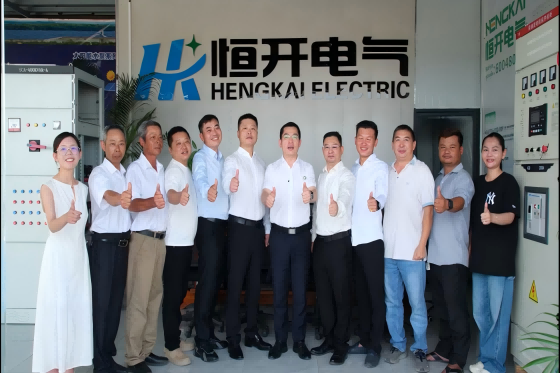
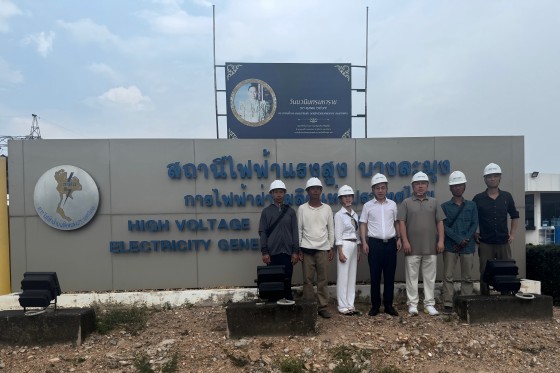
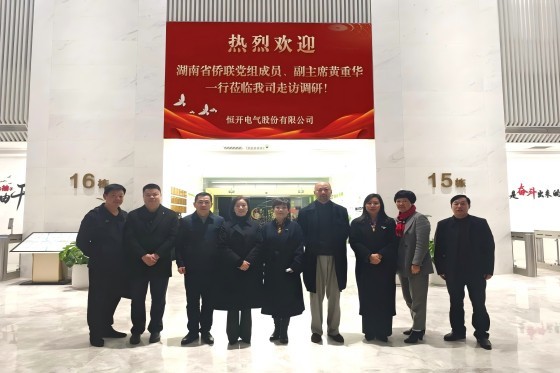
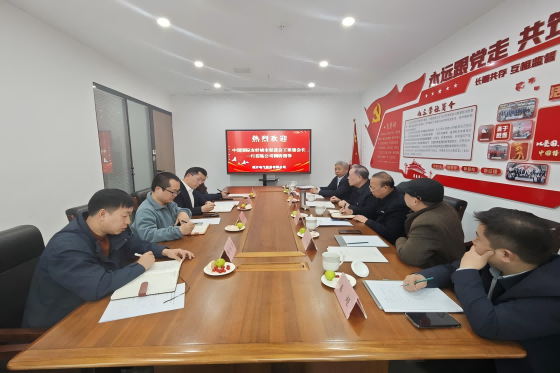
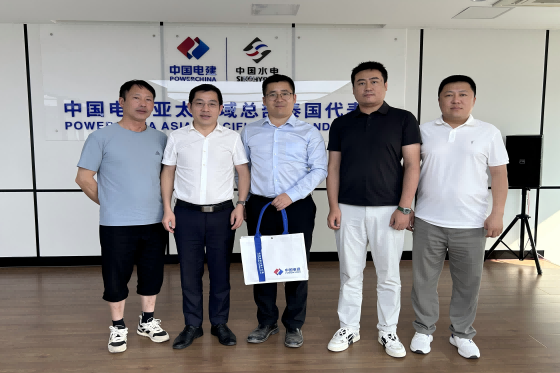
![[China and Thailand join hands to promote development and write a new chapter overseas] Hengkai Electric signed a strategic cooperation agreement with Thai Chunqiu Engineering and Construction Co., Ltd. [China and Thailand join hands to promote development and write a new chapter overseas] Hengkai Electric signed a strategic cooperation agreement with Thai Chunqiu Engineering and Construction Co., Ltd.](https://omo-oss-image.thefastimg.com/portal-saas/new2023101315114369105/cms/image/dd83ef32-80be-4614-b7ac-232a9e0d9c93.jpg)
